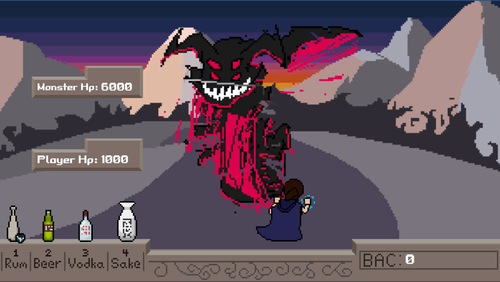
How apps can motivate you by tapping into your personality
Waterloo computer scientist builds “persuasive computer games” designed to motivate people to change unhealthy habits

Waterloo computer scientist builds “persuasive computer games” designed to motivate people to change unhealthy habits
By Joe Petrik David R. Cheriton School of Computer Science Designing computer games that encourage people to make healthy choices is complex because while one person may be motivated by competition, others are turned off by rivalry and virtual trophies.
Designing computer games that encourage people to make healthy choices is complex because while one person may be motivated by competition, others are turned off by rivalry and virtual trophies.
That’s why Rita Orji, a University of Waterloo computer science researcher, is looking to the literature on personality types to design interactive persuasive computer games that are tailored to a person’s motivational style. Persuasive games, also called behavioural change systems, are interactive computer applications designed to motivate people to change their behaviour in ways that benefit them, their community or both.
“In one of our studies, a participant highlighted that she needs a supportive and encouraging environment to do her best, to grow and to change. She said that competition drives people apart and demotivates her,” said Orji, a Banting Postdoctoral Fellow at Waterloo’s David R. Cheriton School of Computer Science. “But another person commented that competition energizes her and pushes her to do her best. The trick is to understand the user’s personality, then tailor the application by selecting the strategy that best matches the user’s type. The one-size-fits-all approach definitely isn’t the best,” she said.
Orji, who is collaborating with The Games Institute colleagues, Chrysanne Di Marco, a professor in the School of Computer Science and Lennart Nacke, a professor in the Department of Drama and Speech Communication, says interactive games can be tailored for people who prefer collaboration and co-operation over competition.
“If I can see that you haven’t met your fitness goal today, I can encourage you to workout for 20 minutes or to take another 2,000 steps to reach your goal,” says Orji. “I can also offer to work out with you. In that way, we can provide mutual encouragement to each other. The interesting part is that we don’t have to be in the same geographic location to collaborate.”
Others are driven by competition. Orji says: “If I see you have walked 9,000 steps and I have walked only 8,000, I may be motivated to walk more, especially if at 10,000 steps a person wins a virtual object — a trophy, for example. My goal is to win but the outcome is more exercise.”
Comparison can also be used, explained Orji. “Interactive systems can provide an opportunity for people to see how they are doing relative to others like them. Seeing how you’re doing relative to others in your peer group — especially those who are more physically active or eat more healthily than you — can motivate you to exercise more or to eat fewer calories. It’s not so much a competition as a self-evaluation relative to others.”
An interesting feature of interactive systems is their ability to simulate the future so people can see how their choices affect them, their communities, and their environment.
“One of the problems with adopting healthy behaviours is that it’s difficult to see their micro impacts,” Orji explained. “Let’s say you took a 30-minute run after work, checked your weight at the end of the day and it hasn’t dropped. Or you had pizza and pop for lunch and checked your weight that evening and maybe it hasn’t increased. We have trouble visualizing the impact of these behaviours in the short term. Simulation provides a way for people to see cause-and-effect links over the longer term. If the system can show how changes in diet and exercise can affect an individual in six months, a year, five years or longer, it begins to click.”
For Orji, her desire to help others crystallized when she saw firsthand how the HIV/AIDS pandemic was devastating communities in Africa. “I grew up in Nigeria, and during that time many people believed that HIV/AIDS was a fallacy, that the disease didn’t exist,” she said. “Against this backdrop was the belief that contraceptive use was prohibited by faith. It was a battle between culture and religion colliding with the reality of many people dying from a preventable disease. It was then I realized I wanted to combine my training in computer science with my passion for helping people to change things for the better.”

Sample of a game geared towards forming healthier habits in binge drinkers and understanding the negative effects of drinking.
Orji says interactive systems can be tailored to other factors like culture, age and gender. “When I was working on a healthy eating app I linked eating behaviour to development of disease. This link doesn’t always register with young people. For them it’s too far into the future to be relevant. But people over 40 see the connection between unhealthy eating and developing disease. Younger people are more attuned to their physical appearance, so that aspect might be the one the designer concentrates on.”
Orji stresses the importance of considering the technological platform for delivering behaviour change systems. In many lower-income countries, smart phones are common so it makes sense to concentrate on designing effective mobile interfaces and applications, rather than applications designed for larger screens.
“In Africa, for example, almost everyone has a smart phone, so they wouldn’t need to buy another device. And young people love to play mobile games. This offers a great opportunity — to design something for devices that people already have and know how to use to change behaviour. My overarching goal is to build interactive systems that integrate seamlessly into people’s lives to make the world a better place.”
The University of Waterloo acknowledges that much of our work takes place on the traditional territory of the Neutral, Anishinaabeg, and Haudenosaunee peoples. Our main campus is situated on the Haldimand Tract, the land granted to the Six Nations that includes six miles on each side of the Grand River. Our active work toward reconciliation takes place across our campuses through research, learning, teaching, and community building, and is co-ordinated within the Office of Indigenous Relations.